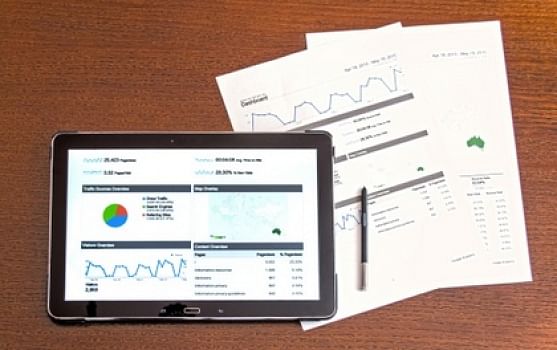The right digital marketing strategy for translation companies

Digital marketing is a huge topic to tackle, but it’s one that most companies need to get to grips with if they are to reach their full potential in the modern business world. For translation companies, the task can be even more of a challenge, as marketing techniques and channels differ from country to country. That’s why having the right digital marketing strategy for the translation industry is so important.
Take on the world!
A well thought out strategy can bring order and clarity to a company’s digital marketing agenda, as well as providing specific targets by which to measure success. One of the first things for a translation company to consider when it comes to digital marketing is which countries they wish to tackle and in which order. This should tie in with the company’s overall strategic plan.
With a list of countries and a rough timetable in place, it’s time to begin researching. Identifying the correct marketing channels for each country is key to success, as is researching whether paid marketing or word of mouth marketing (or both) is likely to reap the biggest rewards. This means understanding consumers and local business practices in each country, in order to create a priority list that includes marketing via:
- Social media
- Email
- Pay per click
- Content marketing
- SEO/link building
- Display advertising
- Affiliate marketing
The list will differ for each country, as different consumer groups respond to different ways of advertising. The marketing types can then be broken down further, by detailing which social media channels are most important, identifying A/B testing options for email campaigns and so forth. It’s a lengthy task but one that can lay the foundations for future success if done right.
Define your purpose
Some companies use digital marketing to raise awareness of their brand and assert themselves as a voice of authority. Others use it to get new customers. Many use digital marketing to try and achieve all of this at once. Before you can measure the success of your digital marketing campaigns, you need to define what your goals are. And to do that, you need to think about what you are prepared to spend in order to achieve those goals, which leads us on to the importance of…
Setting realistic budgets
It’s possible to spend a small fortune on digital marketing – or even a large fortune! That’s why it’s so important to define what your translation company can afford from the outset and then stick to your budget. If you’re creating your first digital marketing strategy, you’ll need to build in a fair bit of flexibility, so that you can reallocate funds to the most successful forms of marketing as your marketing work progresses and evolves.
Monitoring is essential here. You not only need to track what you’ve spent and where, but what the return on that investment is. A Facebook campaign that generates hundreds of likes and shares but no conversions could be great if you’re just trying to raise awareness of your brand, but a disaster if what you were looking to do was sell products. Track what you’re spending on each type of digital marketing in order to know what each like, share, sale and so forth is costing you – then flex your budget allocation in response to the wealth of digital marketing data you now have.
This can be a big task, but don’t be daunted. It’s possible to work out the value that each piece of content, email blast, social media campaign and so forth brings to your company – and that’s some powerful information. If you don’t have the time or inclination to delve too deeply into this, there are software solutions out there that can help!
Know your customers
Another key step to digital marketing success is to define who you are customers are. Market research can be a great help here, as it can allow you to build up customer personas, which you can then reference when devising your digital marketing strategy (they can be useful in other areas of your business, too). Knowing your customers will help you pitch your marketing at the right level.
Consider the languages you use
For translation companies, creating the right digital marketing strategy also has a strong linguistic element. Which languages should you be targeting customers in in each of the countries that you want to operate in? In the US, for example, or at least in certain parts of it, should you be creating dual language campaigns in English and Spanish? A monolingual marketing campaign has the potential to miss out a wide range of potential customers, while a decent Spanish translation in support of your English-language marketing campaign could produce excellent returns.
Again, the languages used will differ from country to country, and the budget allocated to each language within a country may well change over time, as you continue monitoring your return on investment for each campaign and each language that you use.
Putting your strategy into action
You can use your digital marketing strategy as the starting point to map out individual campaigns, taking a joined up approach to building your success around the world. The strategy should be a living document that you update regularly as you learn and grow, so be sure to keep it to hand and use it – if you’re not doing so, you’re hurting your chances of success!
Final thoughts
Will 2019 be the year that you put a digital marketing strategy in place to grow your translation company? If so, have you covered all of the points above?
And while you’re here, have you checked out the Tomedes Text Summarizer Tool yet? It’s free to use and provides a quick and easy way to summarize both online and offline content. Enjoy!
CATEGORIES
STAY INFORMED
Subscribe to receive all the latest updates from Tomedes.
© Copyright 2007-2022 TOMEDES. All Rights Reserved.


Post your Comment